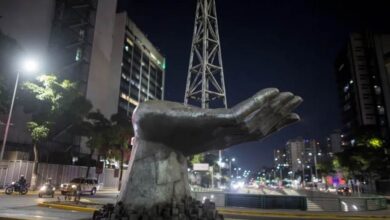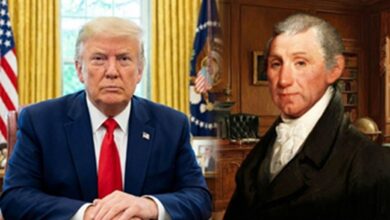
The U.S. levied fresh tariffs—a ten percent charge on most Latin American imports that begins on April 5—causing worry and prudence throughout the area. As rates rose for Venezuela and Nicaragua, countries worked hard to guard their economies and checked their core business plans.
A Sudden Shake-Up in Hemispheric Trade
As abrupt as it was sweeping, former U.S. President Donald Trump has set off a regional storm by announcing “reciprocal” tariffs on imports from most Latin American nations. Starting April 5, a 10% tariff will apply across a wide array of goods, while even steeper rates—15% for Venezuela and 18% for Nicaragua—kick in just days later on April 9. The stated goal? To balance what Trump claims is decades of lopsided trade in which Latin American producers benefited from favorable U.S. access while American firms faced hurdles abroad.
México and Canada are, for now, exempt—an exclusion that underscores the move’s political and economic complexity. Trump called the action an important step for economic safety, designed to help national creation and jobs. But for Latin America, this is more than a change in rules. It hurts the trade ties of the old, as it comes quickly and has a significant impact.
Across the area, the initial view was not intense anger – it was intelligent restraint. Governments struggled to know the policy’s reach. Leaders said they still lacked facts in several situations. Because of the lack of specifics about the items affected, the situation grew even more unclear. Even so, the costs will differ, which is clear. Countries with deep trade ties to the U.S., like Brazil, Colombia, and Chile, could be hit hardest, while those with minimal exposure—like Venezuela—may find the higher rates more symbolic than economic.
Brazil Strikes Back While Others Weigh Their Options
If Washington hoped for quiet compliance, Brazil had other plans. Within hours of the announcement, Brazil’s Chamber of Deputies passed a bill allowing the government to take retaliatory trade action against countries that impose barriers on Brazilian goods. President Luiz Inácio Lula da Silva’s administration wasn’t subtle in its message, stating it was exploring “all possible responses” and would file a complaint with the World Trade Organization (WTO).
In 2024, Brazil shipped around $40 billion in exports—oil, aircraft, and coffee—to the U.S. But such industries face a hazard. Brazilian coffee could rise. Even with a 10 % tax, it does better than Vietnamese coffee, which confronts a harsh 46 % rate. A gain of 36 points matters a lot in global trade.
Reactions varied in this area. For example, Colombia’s President Petro noticed issues with the tariff reason, as he worried it affected U.S. purchasers and damaged international production links. His foreign minister, Sarabia, promised discussions with Colombia’s companies. She expressed trust that Colombian deliveries stayed powerful—even with fresh fees. Colombia’s business group matched this belief, deciding that duties created problems but did not turn severe.
But quiet Chile’s heads underscored that copper, an essential export, avoided the 10 % levy. Because it helped mines, Peru kept a conventional stance. Prime Minister Gustavo Adrianzén voiced confidence that the country’s 2009 free trade agreement with the U.S. would shield it from the policy. “It’s a developing story,” he said, “but for now, we believe the treaty stands.”
In Central America, attitudes appeared patient. Guatemala revealed it would study the overall effect first, then respond. Costa Rica promised dialogue with Washington so they could keep good terms for exports. Through its companies, Honduras observed that, without understanding what items faced difficulties, the quick reaction seemed premature.
And then there was Venezuela—always ready with a fiery quip. Diosdado Cabello, a key figure in the Maduro regime, mocked the tariff spree in a televised broadcast, saying Trump had taxed “even the planet Mars.” It was vintage rhetoric from Caracas, dismissive and defiant, even though trade with the U.S. has already cratered under years of sanctions.
Calculated Calm and the Shadow of “Plan México”
México’s omission from recent tariffs is significant—however, it is probably brief. Though spared at the moment, the nation gets ready for future events. After Trump’s declaration, President Claudia Sheinbaum conducted evening discussions with her officials. She concentrated on firming up “Plan México,” a wide project to reshape industrial output and attract international capital.
According to Altagracia Gómez of the Presidential Business Advisory Council, the president will soon unveil new measures to shield local industry. “We’re focused on landing Plan México,” she said, adding that Sheinbaum’s government is fully aware that trade tensions could spill over.
México’s status as a manufacturing hub—and a key node in global supply chains—gives it leverage. Several Latin American exporters could attempt to redirect their goods via México to dodge the new taxes, notably if they achieve processing or last assembly there. That appealing detour presents danger – it invites examination from the U.S. and can trigger additional limits.
While México’s response was calm and measured, its business elite knows that a U.S. policy shift like this rarely stays neatly within one set of borders. Any strain on regional commerce could indirectly hit México’s export-led economy, particularly if Latin American partners become less competitive and regional integration efforts begin to unravel.
Trade, Politics, and What Comes Next
The real question is whether this is the beginning of a broader trade realignment—or just an election-year stunt. Just months before the 2025 U.S. election, Trump’s timing has led many to speculate that this “reciprocal tariff” policy is aimed at his base: American workers who believe foreign competition has hollowed out local industries.
But even a short-term shock can leave long-term scars. Supply chains are delicate. The threat of permanent tariffs may alter expansion plans, discourage investments, or nudge countries toward Asia and Europe. Brazil, for example, could accelerate its trade relationship with China. Colombia may diversify its coffee exports toward Africa and Southeast Asia. The risks exist specifically for countries that struggle with rising prices and slow recoveries from the COVID-19 period.
The Brazil case could begin as a legal challenge at the WTO, but trade law methods move slowly. Businesses adjust as politicians take positions, and a region previously secure because of firm trade connections with the U.S. readies for all results.
If Trump seeks to negotiate – to direct nations toward accords, wider IP protection, or enhanced conditions for U.S. agriculture – that idea poses a risk – Latin American governments must consider this. Answer with decisive actions, and discussions could end. With caution, local detractors blame them for surrendering.
For some time, the complete consequence of these taxes could remain unseen; however, their notional value appears quickly. They deliver a clear declaration: “No trade relationship is sacred.” The U.S. plans to utilize its financial strength to adjust the rules once more.
Navigating a New Era of Uncertainty
Trump’s tariff salvo has reignited old fears in Latin America of dependency, sudden policy shifts, and being caught in the crosshairs of U.S. domestic politics. While some countries see opportunity—through diversion, exemption, or competitive edge—others see disruption and doubt.
Also Read: Mexico Navigating New Challenges in the Ongoing Judicial Elections Shift of Democracy
What happens next may define trade dynamics in the Western Hemisphere for the next decade. Latin America will not simply accept this setback. The region may shift, oppose, or locate other allies. But the time of careful collaboration could conclude. A cautious, planned next-to-separate bearing will take its place – a bearing shaped, unexpectedly, by the same nation that previously backed open markets.




